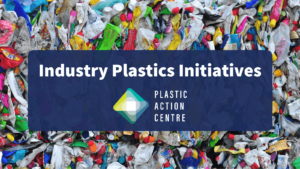- Regulatory Tools
- Circular Economy
- Government
- Government Policy
- Labelling
- Recycling
- Policy
- Strategy and Policy
- Take Action
- National
Report provides insight into packaging solutions to prevent food waste
Paper or plastic? Glass or tin? Or no packaging at all? A new research report from the National Zero Waste Council reveals the relationships between food waste, packaging and GHG emissions.
It provides insight into how and when packaging can be applied to prevent food spoilage and waste to significantly reduce greenhouse gas (GHG) emissions from Canada’s agri-food sectors.
The research report, Less Food Waste, Less Packaging Waste, was commissioned by the National Zero Waste Council (NZWC) in partnership with RECYC-QUÉBEC, Éco Entreprises Québec and PAC Packaging Consortium – with funding provided by Vancity, RECYC-QUÉBEC and Éco Entreprises Québec. It was prepared by Value Chain Management International, a global consulting firm specializing in the agriculture and food industries.
“Reducing food waste and advancing the circular economy must be a top priority in our collective fight against climate change because preventing one tonne of food waste prevents four tonnes of CO2-equivalent emissions,” said Malcolm Brodie, chair of the NZWC. “Rather than eliminating packaging, the industry must choose packaging materials and designs that keep food from spoiling and support the circular economy in Canada.”
“Discarded packaging has become an emblem of the linear economy – it’s something we all deal with every day so it’s easy to overestimate its environmental impact compared to food waste,” said Jim Downham, vice chair of the NZWC and CEO of PAC Packaging Consortium. “It’s crucial that we get packaging right to keep food fresh and safe and to convey important information to customers.”
The report also urges caution about misleading marketing claims around biodegradable, compostable and bio-based plastics. While these materials may appear beneficial, their use can result in unintended environmental and economic impacts. While some alternative plastics can be recycled, these require specialized infrastructure and routinely contaminate or disrupt established recycling systems for conventional plastics.
Biodegradable plastic packaging may also lead consumers to be less careful with their waste, and since there are no established standards for those plastics, there is no guarantee the materials will break down without releasing toxins or microplastics into the environment.
Governments are encouraged to establish minimum recycled content requirements, to advance certification programs for recyclable and compostable packaging, improve collection programs and to assist with implementing extended producer responsibility programs, which transfer the cost and management of recycling packaging and paper products to producers.
Consumers play a critical role as well – their awareness and participation are key factors for maximizing product shelf life at home, as well as for ensuring the success of residential recycling and composting programs. Education initiatives are important for bringing clarity to issues like “best before” dates, food storage best practices and effective shopping habits.
Read the full and original article at FoodinCanada.com



